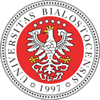Proszę używać tego identyfikatora do cytowań lub wstaw link do tej pozycji:
http://hdl.handle.net/11320/7215| Tytuł: | Comprehensive analysis of the process of population ageing in Poland in the years 1950–2016 |
| Autorzy: | Roszkowska, Ewa |
| Słowa kluczowe: | population ageing biological age groups age factor median age |
| Data wydania: | 2018 |
| Data dodania: | 3-gru-2018 |
| Wydawca: | Wydawnictwo Uniwersytetu w Białymstoku |
| Źródło: | Optimum. Economic Studies, Nr 2(92) 2018, s. 206-226 |
| Abstrakt: | Aim – The main aim of the study is to determine the dynamics of the ageing process of the Polish population and to present a forecast of population ageing based on comprehensive analysis of the age structure of this population. The separated components of this structure are biological age groups: 0–14, 15–64, 65 years and more. The time period of the research comprises the years 1950–2016, while the population forecast by age is presented for 2020 and 2050. The elaboration includes data from GUS. Research methodology – In assessing the level of the ageing of Polish society there were used, among others, the old age index, old age coefficient, a measure of the similarity of structures, a measure of the structural change intensity, and the median age. Score – In the years 1950–2016 in Poland there were observed changes in the age structure of the population in age groups: 0–14 years old, 15–64 years old, 65 years old and more, including a steady trend in the percentage of people in the age group 0–14 years old and a steady upward trend in the percentage of people aged 65 and over, a strong upward trend in the old age index, and a strong tendency of increase in the post-working age dependency ratio. The Central Statistical Office’s (GUS) forecasts indicate that the population ageing measured by changes in the age structure of the population and the shifting of the median age which are taking place in Poland in a dynamic manner, will continue with increased intensity over the next decades. Originality/value – The added value of the work is the use of the similarity of structures and the intensity of structure changes, which together with an approach based on classical indicators allowed for a comprehensive analysis of the age structure of the Polish population in dynamic terms, determining the quantitative nature of changes in the age structure over time, the direction of these changes and their intensity. It was also pointed out that in light of the ongoing demographic transformations, the concept of silver economy understood as an economic system aimed at using the potential of the elderly and taking into account their needs is becoming a priority. |
| Afiliacja: | Faculty of Economics and Management, University of Bialystok |
| E-mail: | e.roszkowska@uwb.edu.pl |
| Sponsorzy: | This work was supported by the Polish Ministry of Science and Higher Education under subsidy for maintaining the research potential of the Faculty of Economy and Management, University of Bialystok. |
| URI: | http://hdl.handle.net/11320/7215 |
| DOI: | 10.15290/oes.2018.02.92.16 |
| ISSN: | 1506-7637 |
| metadata.dc.identifier.orcid: | 0000-0003-2236-3462 |
| Typ Dokumentu: | Article |
| Występuje w kolekcji(ach): | Artykuły naukowe (WEiF) Optimum. Economic Studies, 2018, nr 2(92) |
Pliki w tej pozycji:
| Plik | Opis | Rozmiar | Format | |
|---|---|---|---|---|
| Optimum_2_2018_E_Roszkowska_Comprehensive_analysis_of_the_process_of_population_ageing_in_Poland_in_the_years_1950–2016.pdf | 649,16 kB | Adobe PDF | Otwórz |
Pozycja jest chroniona prawem autorskim (Copyright © Wszelkie prawa zastrzeżone)

